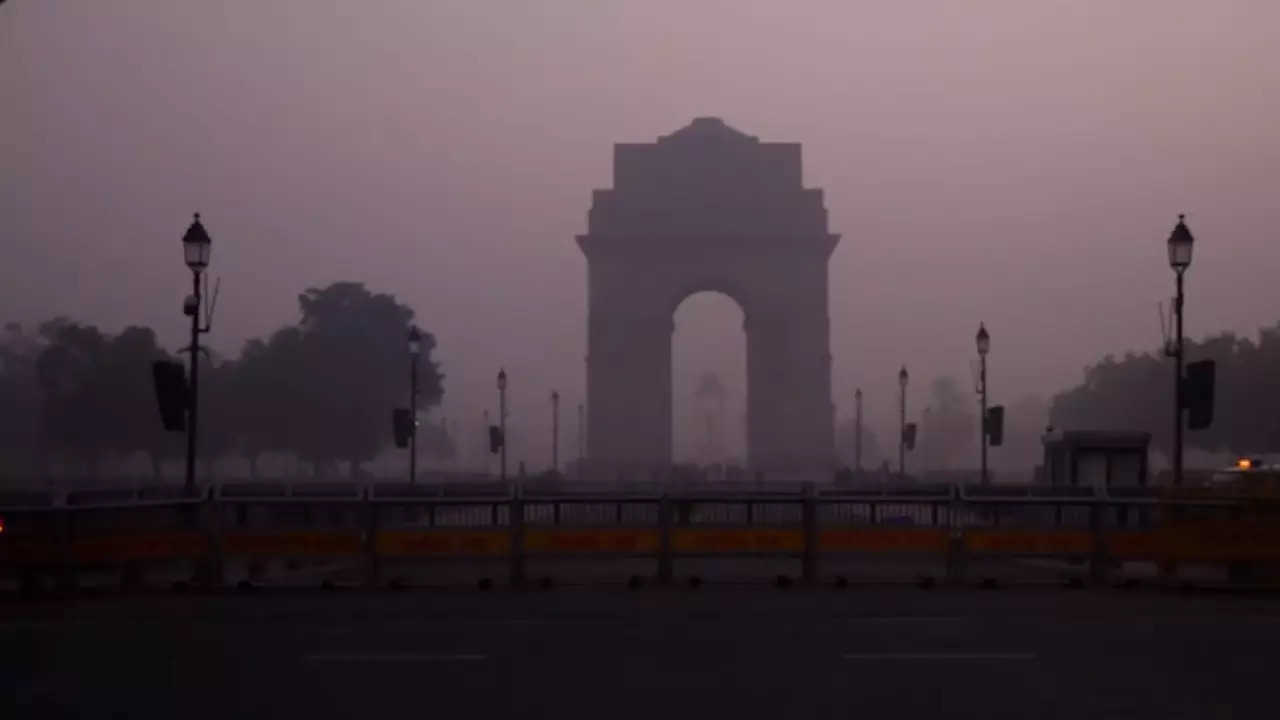Delhi Air Quality Plummets: Stage-IV Restrictions Imposed
The air quality in Delhi-NCR has taken a drastic turn for the worse, prompting the Commission for Air Quality Management (CAQM) to impose the most stringent Stage-IV restrictions under the Graded Response Action Plan (GRAP). Get ready for a deep dive into this alarming situation and what it means for Delhi's residents. Prepare to be shocked as we uncover the grim details of Delhi's air pollution crisis and the drastic measures implemented to curb it.
Delhi Chokes Under Severe Air Pollution: AQI Soars to 386
On Wednesday, Delhi's Air Quality Index (AQI) shot up to a terrifying 386, firmly placing it in the "severe" category. This dangerous spike is largely attributed to a combination of factors, with dense fog and plummeting temperatures playing significant roles. The India Meteorological Department (IMD) even predicted that the AQI might breach the 400 mark—a truly alarming scenario. These alarming levels pose serious health risks, prompting urgent action from authorities.
Understanding the Severity: Health Impacts of Severe Air Pollution
Breathing in Delhi's polluted air right now is like taking tiny, poisonous bites. Severe air pollution leads to respiratory illnesses, heart problems, and can exacerbate pre-existing health conditions. Children, the elderly, and those with respiratory issues are particularly vulnerable. It's time to take immediate action to protect your loved ones. Are you prepared to deal with this invisible enemy invading our capital?
Graded Response Action Plan (GRAP) Stage-IV: What Does it Mean?
The CAQM's implementation of GRAP Stage-IV indicates the severity of the situation. This emergency measure triggers strict restrictions, including the possibility of school closures, construction bans, and limitations on vehicular traffic, amongst other measures. Are you aware of what's expected from every citizen?
Key Restrictions under GRAP Stage-IV: A Breakdown
GRAP Stage-IV brings a cascade of stringent measures designed to reduce pollution. These restrictions range from a ban on construction activities, except for essential projects, to the prohibition of entry of heavily polluting vehicles in Delhi-NCR. Further limitations on vehicles on the road through odd-even schemes, are likely in place. All of these are designed to bring air quality levels back down, but does it go far enough? Let's uncover details about what each restriction looks like.
Understanding the Impact of These Measures
While the measures taken are clearly far-reaching, their effectiveness in a long-term way is debatable. With long tail keywords relating to 'GRAP stage 4 effectiveness', much remains uncertain about the complete solution.
Looking at the Long-Term Effects of the GRAP
The long term effects of this response plan will hopefully provide some relief and improvement. More extensive data is required over several weeks in order to adequately understand the overall effects. In combination with other changes that require changes in social behaviour, there's likely to be a long road ahead. The GRAP needs to show sustainable success, reducing future events.
The Road Ahead: Long-Term Solutions for Delhi's Air Pollution
Tackling Delhi's chronic air pollution demands a multi-pronged approach. We must shift our reliance from fossil fuels towards renewable energy, reduce traffic congestion through smart mobility solutions, and implement robust industrial emission control. Public participation is absolutely key. Together we must fight for cleaner air!
Long-Term Strategies and Policies: A Critical Need
Several possible solutions could be investigated. More investment in sustainable, green transportation, increased focus on public transport and better city planning all come to mind. The future will be dependent upon what kind of changes we agree upon today. Finding answers to issues with 'sustainable air quality solutions in India' can help provide longer term effects. This goes beyond immediate quick fixes.
Collaborative Efforts and Individual Responsibility
The responsibility for cleaner air rests on the shoulders of both the government and individuals. Public participation remains an important feature. The long-term effects of the plan will likely require people to think differently and act more conscientiously.
Take Away Points
- Delhi's AQI has reached severe levels, necessitating the implementation of GRAP Stage-IV restrictions.
- GRAP Stage-IV involves various restrictions on industrial activity and personal vehicular traffic.
- Long-term solutions for air pollution require systemic change and continued cooperation amongst government, businesses, and individuals.
- Stay informed and engage in proactive measures to minimize personal health risks.
This situation is far from resolved and many more measures may need to be investigated in order to find solutions. This information should provide some help understanding some of the concerns at hand.




